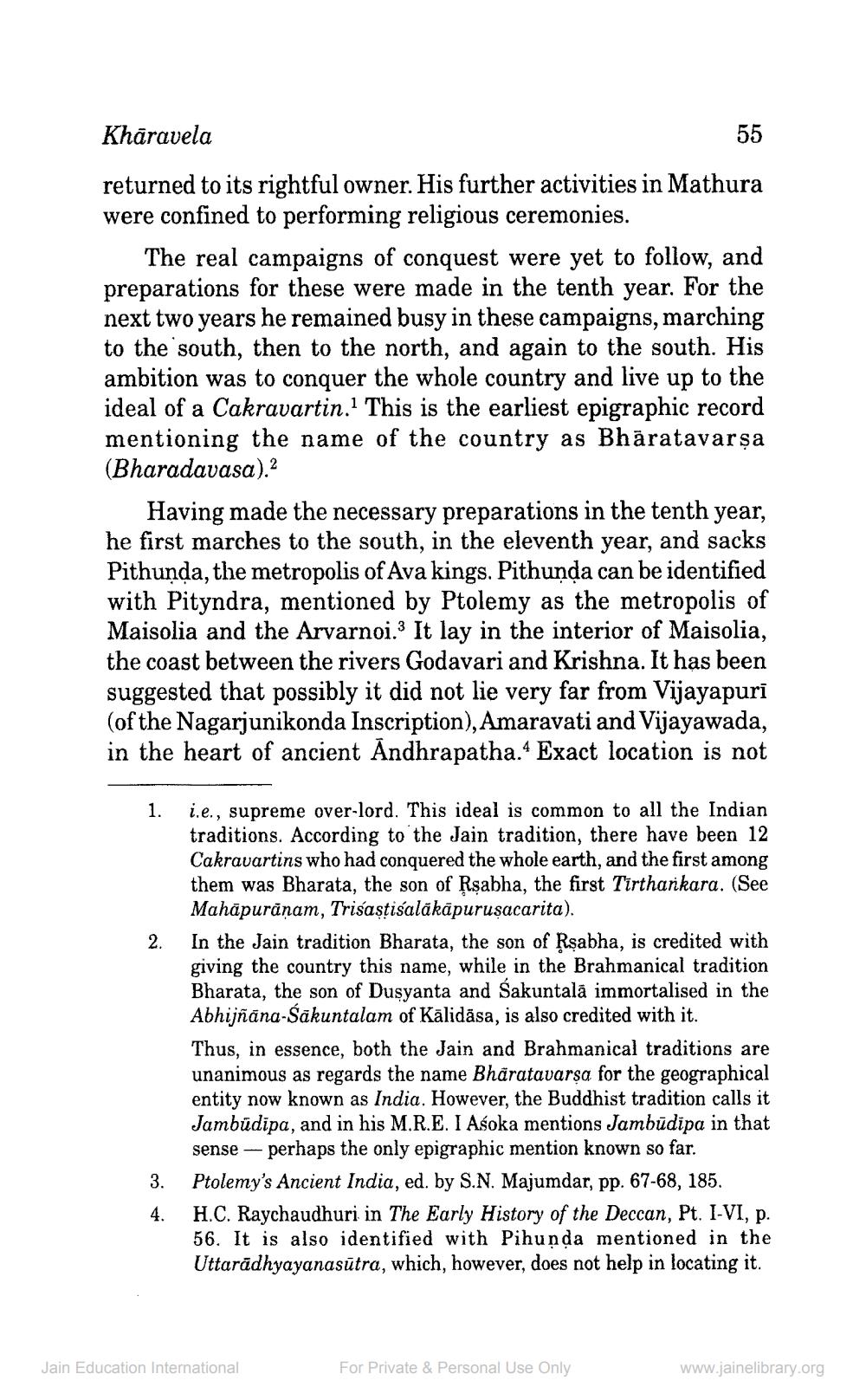________________
55
Khāravela returned to its rightful owner. His further activities in Mathura were confined to performing religious ceremonies.
The real campaigns of conquest were yet to follow, and preparations for these were made in the tenth year. For the next two years he remained busy in these campaigns, marching to the south, then to the north, and again to the south. His ambition was to conquer the whole country and live up to the ideal of a Cakravartin. This is the earliest epigraphic record mentioning the name of the country as Bhāratavarşa (Bharadavasa).
Having made the necessary preparations in the tenth year, he first marches to the south, in the eleventh year, and sacks Pithunda, the metropolis of Ava kings. Pithunda can be identified with Pityndra, mentioned by Ptolemy as the metropolis of Maisolia and the Arvarnoi." It lay in the interior of Maisolia, the coast between the rivers Godavari and Krishna. It has been suggested that possibly it did not lie very far from Vijayapuri (of the Nagarjunikonda Inscription), Amaravati and Vijayawada, in the heart of ancient Andhrapatha. Exact location is not
i.e.. supreme over-lord. This ideal is common to all the Indian traditions. According to the Jain tradition, there have been 12 Cakravartins who had conquered the whole earth, and the first among them was Bharata, the son of Rsabha, the first Tirtharkara. (See Mahāpuranam, Trisastišalákāpurusacarita). In the Jain tradition Bharata, the son of Rsabha, is credited with giving the country this name, while in the Brahmanical tradition Bharata, the son of Dusyanta and Sakuntalā immortalised in the Abhijñāna-Sakuntalam of Kālidāsa, is also credited with it. Thus, in essence, both the Jain and Brahmanical traditions are unanimous as regards the name Bhäratavarsa for the geographical entity now known as India. However, the Buddhist tradition calls it Jambūdipa, and in his M.R.E. I Asoka mentions Jambūdipa in that sense - perhaps the only epigraphic mention known so far. Ptolemy's Ancient India, ed. by S.N. Majumdar, pp. 67-68, 185. H.C. Raychaudhuri in The Early History of the Deccan, Pt. I-VI, p. 56. It is also identified with Pihunda mentioned in the Uttarādhyayanasūtra, which, however, does not help in locating it.
3. 4.
Jain Education International
For Private & Personal Use Only
www.jainelibrary.org




